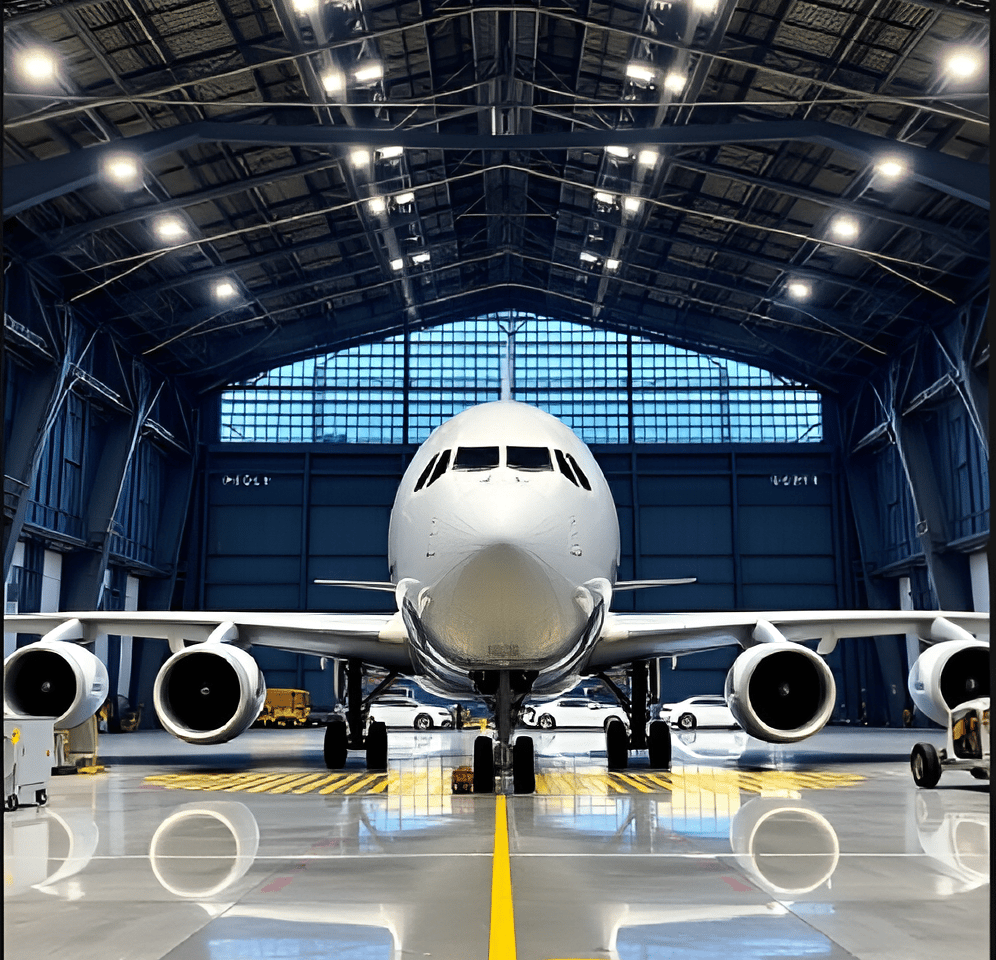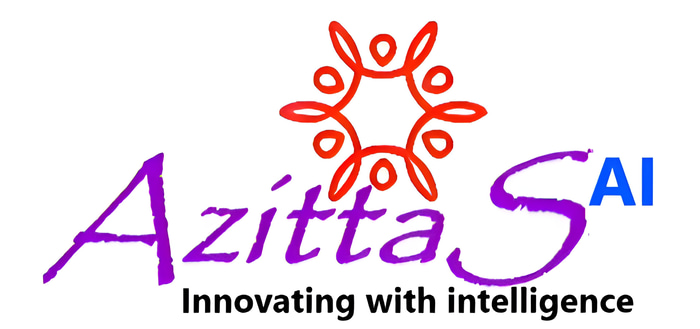AI helps MRO achieve quicker RTS and turnarounds
The integration of intelligent systems into aircraft maintenance practices brings numerous benefits, Intelligence means efficiency at all levels
BLOGS ON MRO


Introduction to Intelligent Systems in Aircraft Maintenance
Intelligent systems represent a significant advancement in various industries, and the aerospace sector is no exception. In the context of aircraft maintenance, these systems leverage sophisticated technologies, particularly artificial intelligence (AI), to enhance the efficiency, safety, and cost-effectiveness of maintenance, repair, and overhaul (MRO) processes. Intelligent systems encompass a range of advanced tools and methodologies that integrate data analytics, machine learning, and automation, ultimately transforming traditional maintenance practices.
The implementation of intelligent systems in aircraft maintenance facilitates predictive maintenance, enabling operators to anticipate potential issues before they escalate into critical failures. By analyzing vast amounts of historical data and real-time monitoring, AI algorithms can identify patterns and anomalies in aircraft performance, allowing for timely interventions. This predictive approach not only minimizes downtimes but also ensures compliance with stringent safety regulations, significantly enhancing operational reliability.
Moreover, intelligent systems streamline workflows and improve resource allocation. By automating repetitive tasks and optimizing scheduling, maintenance crews can devote more time to critical inspections and repairs, ultimately leading to enhanced aircraft availability. These systems also play a vital role in inventory management by utilizing intelligent analytics to predict spare parts requirements, thereby reducing costs associated with overstocking or last-minute purchases.
The integration of intelligent systems supports a culture of continuous improvement within MRO operations. Data-driven insights empower decision-makers to refine processes, enhance training programs, and adopt best practices that align with evolving industry standards. As the aerospace industry continues to embrace these advanced technologies, it becomes increasingly clear that intelligent systems are revolutionizing aircraft maintenance, ensuring safety, efficiency, and economic viability for operators worldwide.
The Role of AI in Aircraft Maintenance
In recent years, artificial intelligence (AI) has emerged as a game-changing factor in aircraft maintenance, revolutionizing traditional methodologies through the integration of intelligent systems. These technologies play a critical role in enhancing the efficiency, accuracy, and reliability of maintenance operations. AI-powered solutions facilitate high-precision inspections, streamline non-destructive testing (NDT), and employ predictive analytics to foresee potential issues before they escalate.
One significant application of AI in aircraft maintenance is high-precision inspections. Utilizing advanced imaging and machine learning algorithms, AI systems can analyze vast amounts of data collected from aircraft surfaces, pinpointing anomalies that might be missed by human inspectors. For instance, drones equipped with AI-powered cameras can conduct visual inspections of aircraft exteriors, providing real-time feedback and ensuring that any irregularities are promptly addressed. This not only expedites the inspection process but also enhances accuracy, thereby reducing the potential for costly errors.
Moreover, non-destructive testing (NDT) has also benefitted from AI advancements. Intelligent systems can assess aircraft components without causing damage, allowing for thorough evaluations of structural integrity. Sophisticated AI algorithms can process data from NDT techniques, such as ultrasonic testing or thermography, identifying defects and determining the overall health of various components more efficiently than traditional methods.
Predictive analytics, powered by AI, further enhances the decision-making process in maintenance operations. By analyzing historical data and monitoring real-time performance metrics, AI systems can predict when components are likely to fail or require maintenance. This proactive approach reduces unexpected downtimes and optimizes maintenance schedules, allowing for more effective resource allocation.
Overall, AI integration in aircraft maintenance not only augments data collection and analysis but also significantly boosts the accuracy and efficiency of the maintenance process, heralding a new era of intelligent aircraft care.
Digital Twins and Real-Time Diagnostics
In the aviation industry, the advent of technology has introduced the concept of digital twins, which serves as a pivotal innovation in aircraft maintenance. A digital twin is essentially a virtual representation of a physical aircraft, enabling ongoing synchronization with its real-world counterpart through data analytics and real-time diagnostics. This technology creates a detailed model of an aircraft, capturing its design, engineering, and performance data, thus providing a comprehensive view of its operational condition.
The implementation of digital twins offers significant advantages for aircraft maintenance. By continuously updating the virtual model with real-time data collected from various sensors installed on the aircraft, operators can monitor numerous aspects of performance, such as engine efficiency, structural integrity, and environmental factors. This constant flow of information allows maintenance teams to gain insights into potential issues before they escalate, fostering a proactive maintenance culture rather than a merely reactive one.
Furthermore, real-time diagnostics facilitated by digital twins improve the forecasting of maintenance needs. With advanced analytics capabilities, these systems can predict when components are likely to require servicing or replacement based on usage patterns and stress factors. This capability not only enhances the reliability of aircraft but also minimizes unplanned downtimes, which can significantly impact airline operations and profitability. By anticipating maintenance requirements, airlines can better allocate resources, schedule servicing activities, and optimize aircraft availability.
In summary, the integration of digital twins and real-time diagnostics into the aircraft maintenance process revolutionizes the traditional methodologies. These technologies not only enhance efficiency but also improve safety, thereby setting a new standard in the aviation industry. The continuous evolution of this approach promises to deliver even greater benefits in operational excellence and cost savings in the years to come.
Case Studies: Successful Implementations in Commercial and Defense Aviation
The integration of intelligent systems in aviation maintenance has proven to be transformative, with notable implementations across both commercial and defense sectors. One compelling case study is the collaboration between Azittas AI Systems and a leading airline facing significant operational inefficiencies due to maintenance delays. The airline struggled with a manual maintenance tracking system, which often led to reactive rather than proactive strategies. To address these challenges, Azittas AI Systems deployed a predictive maintenance solution that utilized machine learning algorithms to analyze historical data and identify potential failures before they occurred. The outcome was remarkable, with a 30% reduction in maintenance downtime and a 25% decrease in operational costs, ultimately enhancing overall fleet performance.
In the realm of defense aviation, another compelling case study involves a military organization that required a robust solution to streamline its aircraft readiness processes. Faced with stringent safety regulations and complex logistics, the organization turned to Azittas AI Systems for assistance. The innovative platform combined real-time data analytics with automated scheduling, optimizing maintenance workflows and ensuring timely inspections. As a result of these intelligent system implementations, the organization reported a 40% improvement in aircraft availability, enabling more effective mission planning and execution.
These case studies exemplify the versatility of intelligent systems in aviation maintenance, showcasing their ability to deliver substantial improvements across varied contexts. By harnessing advanced analytics and machine learning, organizations can not only address immediate operational challenges but also achieve long-term strategic benefits. The successful applications by Azittas AI Systems underline the critical role of intelligent systems in transforming maintenance practices, promoting efficiency, and enhancing safety in both commercial air travel and defense operations.
Benefits of Intelligent Systems in MRO: A Detailed Analysis
The adoption of intelligent systems in Maintenance, Repair, and Overhaul (MRO) processes has transformed the aviation industry by delivering substantial benefits, significantly enhancing safety, efficiency, and cost-effectiveness. One of the most critical advantages these systems provide is the ability to predict maintenance needs proactively. This predictive maintenance approach minimizes unscheduled downtime, allowing airlines to achieve higher fleet availability, thereby maximizing operational efficiency.
Furthermore, intelligent systems utilize advanced data analytics to improve safety protocols. These systems continuously monitor aircraft performance and health, identifying potential issues before they escalate. This real-time monitoring ensures that maintenance activities are performed when necessary, thereby reducing the risk of catastrophic failures and ensuring a safer flying experience for passengers and crew alike. Moreover, the automation of routine tasks minimizes human error, further enhancing safety standards within the aviation sector.
Cost-effectiveness is another significant benefit associated with the implementation of intelligent systems in MRO operations. By optimizing maintenance schedules and reducing the frequency of unnecessary repairs, airlines can realize substantial savings. The investment in intelligent systems not only lowers labor costs but also reduces the need for excess inventory and spare parts, streamlining operations. Additionally, the extended lifespan of aircraft facilitated by efficient maintenance practices contributes to better resource management and overall profitability.
The integration of intelligent systems positively impacts the operational success of aviation companies. The ability to reduce aircraft downtime not only improves the overall availability of fleet assets but also enhances customer satisfaction through timely departures and arrivals. The operational resilience provided by these advanced technologies positions airlines to respond more adeptly to the dynamic demands of the aviation market.
In conclusion, the benefits of integrating intelligent systems into MRO practices cannot be overstated. From enhancing safety protocols and boosting efficiency to driving down costs and extending aircraft lifespan, these technologies are revolutionizing the aviation industry's approach to maintenance management.
Challenges and Considerations in Implementing Intelligent Systems
The integration of intelligent systems into aircraft maintenance practices brings numerous benefits, but it is not without its challenges. Organizations aiming to adopt these advanced technologies must navigate a range of potential hurdles that can impact their success and efficiency. One of the foremost concerns is data security. As intelligent systems rely heavily on data to analyze performance and predict maintenance needs, safeguarding sensitive information against cyber threats is imperative. Organizations must implement robust security measures, including encryption and access controls, to protect their data assets from potential breaches that could compromise aircraft safety and regulatory compliance.
Another significant challenge lies in the need for skilled personnel to operate and maintain these intelligent systems. The complexity of these technologies demands a workforce that is proficient in both aviation principles and advanced data analytics. Consequently, organizations may find themselves facing a skills gap, particularly as many existing employees may lack the necessary training. To address this issue, investing in continuous learning and professional development programs is essential. Collaborating with educational institutions to create training programs tailored to intelligent systems could also bridge this gap effectively.
Furthermore, resistance to change within established aerospace organizations can present an obstacle to the adoption of intelligent systems. Employees accustomed to traditional maintenance practices may be hesitant to embrace new technologies due to fears of job displacement or uncertainty about their efficacy. To mitigate this resistance, it is critical to foster a culture of openness and communication. Engaging employees from the outset, providing comprehensive demonstrations of the benefits, and highlighting success stories from early adopters can help facilitate a smoother transition and encourage acceptance of intelligent systems in maintenance operations.
Future Trends in Aircraft Maintenance Technologies
The future of aircraft maintenance is poised for a transformation through the adoption of intelligent systems, propelled by advancements in artificial intelligence (AI), automation, and predictive maintenance technologies. The integration of these innovations is expected to greatly enhance the efficiency and effectiveness of maintenance, repair, and overhaul (MRO) processes, significantly reducing downtime and costs associated with aircraft operations.
One of the most promising trends is the development of AI-driven predictive maintenance tools. These systems utilize data collected from various sensors on aircraft to analyze performance and anticipate potential failures before they occur. By harnessing large datasets and machine learning algorithms, predictive maintenance can facilitate timely interventions, thereby extending the lifespan of aircraft components and improving overall safety. This proactive approach is set to replace traditional inspection methods that rely heavily on scheduled maintenance intervals, heralding an era of data-informed decision-making.
Automation is another critical element that is shaping the future of aircraft maintenance. Automated systems are increasingly being deployed to handle repetitive tasks, such as inspections and repairs, enabling maintenance personnel to focus on more complex issues. Drones are being used to perform visual inspections of hard-to-reach areas, while robotic systems are assisting in components replacement, reducing labor costs and time. This shift not only streamlines operations but also minimizes human error, enhancing the reliability of aircraft maintenance processes.
Furthermore, the advent of augmented reality (AR) and virtual reality (VR) technologies is set to revolutionize training and support in aircraft maintenance. These immersive technologies allow technicians to visualize complex systems and procedures, facilitating better training outcomes and faster problem resolution. As these intelligent systems evolve, the aerospace industry will witness heightened efficiency, improved safety, and reduced operational downtime, paving the way for a new era of aircraft maintenance.





